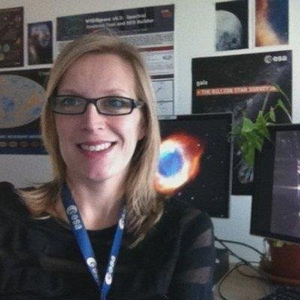Your comments
Dear Nora,
Many thanks for informing us, this looks to be a bug that we will try to fix as soon as possible. We'll get back to you once it's fixed.
Kind regards,
Deborah on behalf of the ESASky team
Dear Becky,
Currently in ESASky we provide access to XMM-Newton RGS spectra and Chandra HETG and LETG spectra:
https://www.cosmos.esa.int/web/esdc/esasky-observations#XMM-Newton-OBS
We are currently in communication with the Chandra mission specialists and the XMM-Newton mission specialists and plan to include further Chandra spectral products (including HRC and ACIS spectra if possible) and in the near future to include XMM-Newton EPIC spectral products in ESASky.
If you have any further details on what products you particularly need please let us know.
Kind regards,
Debbie, on behalf of the ESASky team
Dear Becky,
In order to load the publications information in the lower panel (and to be able to filter a column), you are already selecting just one object. If ESASky then modifies the number of hats in the display, it will only be 1: the 1 object you selected.
Perhaps what ESASky needs is that the user can chose to load the publications from all the objects highlighted, by academic hats, in the field, and then filter on these? Then an update on the number of academic hats displayed would make sense. However, please note that currently ESASky has a limit of 3000 on the number of papers that can be displayed and sorted in the results table.
Kind regards,
Debbie, on behalf of the ESASky team
Dear Becky,
Many thanks for your feedback. We've put this request in our backlog and we will coordinate this request with the Herschel archive specialists to find a solution. We'll let you know when it has been implemented.
Kind regards,
Deborah, on behalf of the ESASky team
Dear Becky,
Great feedback, we've added it to our backlog and will let you know when it's implemented!
Regards,
Deborah, on behalf of the ESASky team
Dear Anthony,
Thanks for the feedback. We're looking into this (it's a complicated set up to test!) and will get back to you after the holiday period.
Kind regards,
Deborah, on behalf of the ESASky team
Dear Pedro,
Would you for example like to be able to minimise and maximise the menu of icons? Please send a screenshot of the issue if I haven't understood it correctly.
Kind regards,
Deborah, on behalf of the ESASky team
Dear Pedro,
Many thanks for feedback. We've had similar requests to add a scale and / or a grid and we'll therefor increase the priority of this in our backlog.
If I understand correctly your last sentence, you can take a screenshot of ESASky using the screenshot icon, which removes the menus and data panels but keeps the footprints / sources / background image etc.
Kind regards,
Deborah, on behalf of the ESASky team
Dear Pedro,
Many thanks, we'll add your suggestion to our backlog!
Kind regards,
Deborah
Customer support service by UserEcho


Dear Antonio,
Many thanks for reminder. We'll update the XMM-SUSS catalogue as soon as we can, we have this issue in our backlog.
Kind regards,
Deborah on behalf of the ESASky team